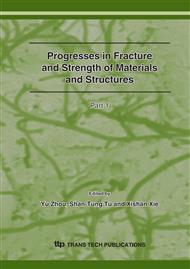p.2521
p.2525
p.2529
p.2533
p.2537
p.2541
p.2545
p.2549
p.2553
Analyzing the Strength and Stability of Large Underground Cavern Group with Different Generator Socket Construction Schemes Based on Three Dimensional Numerical Simulation
Abstract:
Shuibuya hydroelectric project is the most upstream power station in the Qingjiang cascade development of China. The power plant is designed as underground powerhouse, from seventh to eighth construction step, how to ensure the stability of surrounding rock mass of generator socket and controlling the displacement of lower side wall where the soft stratum located in is a key problem. To solve the problem, the three dimensional numerical model of the underground powerhouse was established based on the results of geological investigation. Then, the detailed construction processes, including the replacement of soft rock, excavation as well as support, were numerically simulated. In order to improve the simulation accuracy, the rock mechanics parameters were back analyzed based on in-situ monitor data before sixth construction step, then using Mohr-Coulomb criterion, the paper simulated and analyzed the damage zones of surrounding rock and displacement of lower side wall corresponding to different schemes. The best scheme was recommended by synthetically considering the stability indexes of each scheme. The study had a scientific meaning to guide Shuibuya project construction. Introduction When the underground cavern is excavated, the initial ground stress is released
Info:
Periodical:
Pages:
2537-2540
Citation:
Online since:
September 2007
Authors:
Price:
Сopyright:
© 2007 Trans Tech Publications Ltd. All Rights Reserved
Share:
Citation:


